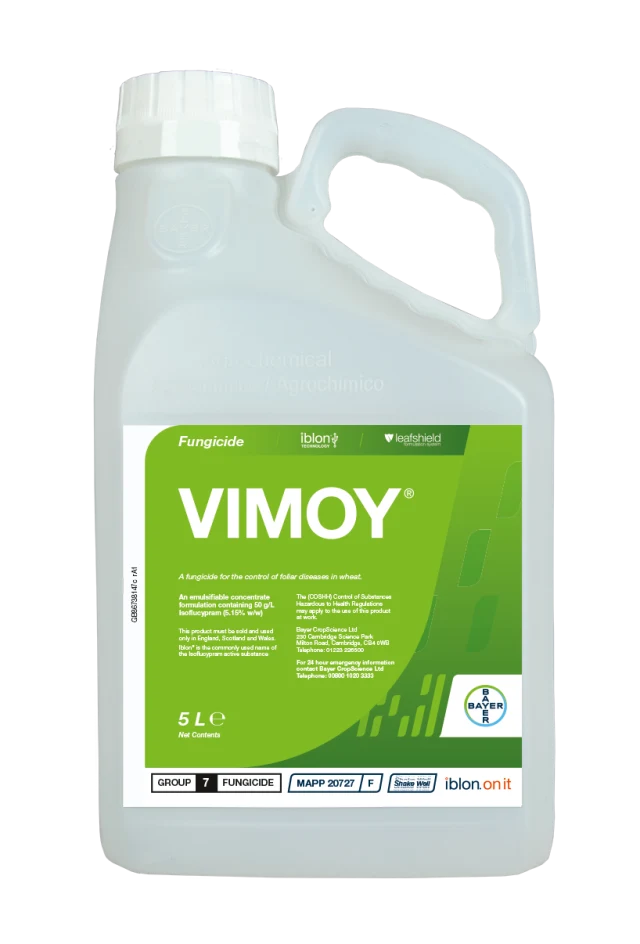Published on 28th March 2025
Disease Management
2025 disease update: monitoring identifies brown rust and net blotch problems

Routine testing of disease isolates taken from samples collected across Great Britain reveal a significant reduction in the performance of triazoles used to control net blotch and the emergence of a strain of brown rust with reduced sensitivity to benzovindiflupyr. The same monitoring found no shift in the sensitivity of prothioconazole to isolates of Septoria tritici and continued strong performance against yellow rust.
“The long-term monitoring data for prothioconazole is encouraging, especially for the UK. Thanks to growers maintaining dose rates and recognition of the need to ensure it is mixed with another active substance belonging to a different mode of action group, the sensitivity of Septoria isolates to prothioconazole remains largely unchanged over recent years when tested at the industry standard EC50 value level, meaning field rates will continue to deliver the expected level of protection,” Greg Hanna, Bayer market development agronomist, says.

“That prothioconazole continues to deliver reliable activity against Septoria 21 years after it was granted market approval demonstrates that through responsible use it is possible to preserve the performance of an active substance for the long term. The continuing and consistent contribution of prothioconazole also allows us to use it as a resistance management tool to protect and preserve the strong efficacy levels we are seeing from actives with different modes of action such as fenpicoxamid, isoflucypram and pydiflumetofen,” he says.
Against yellow rust, prothioconazole remains an effective fungicide with testing showing good stability in performance across western Europe.
“There is a small fluctuation between seasons, which is to be expected, but sensitivity to prothioconazole remains broadly consistent across Europe and comfortably within the range expected to confer reliable performance at field rates,” Mr Hanna says.
“This is a reassuring finding, especially as prothioconazole is often relied on to contribute activity against powdery mildew and stem-based diseases, such as common eyespot and Fusarium,” he adds.
Barley diseases
The more concerning news is the declining sensitivity of net blotch, and to a lesser extent, ramularia isolates to DMI fungicides.
“The sensitivity shift to triazoles and to some strobilurins and SDHIs in net blotch is concerning. To overcome this, growers should mix modes of action across the programme. Monitoring data show that the SDHI fluopyram is unaffected as is the strobilurin trifloxystrobin despite the widespread presence of the F129L mutation in the population that confers reduced sensitivity to other strobilurins,” Mr Hanna says.
In brown rust, concern surrounds the spread of isolates featuring the C187F mutation that confers resistance to benzovindiflupyr. This gene was found in 27% of isolates tested in 2022.
“The spread of isolates expressing the C187F mutation is concerning as it will impact disease control strategies, especially at the T2 timing. Fortunately, there is no evidence of resistance to other SDHIs, including bixafen and isoflucypram (Iblon®). Equally, fluoxastrobin along with other strobilurins remains stable, so growers have alternatives. It is worth noting, however, that robust dose rates will be needed to deliver the expected protection, typically above that used for yellow rust, especially at T3 when the disease pressure is usually at greatest,” Mr Hanna says.
“The reduced sensitivity of benzovindiflupyr to C187F isolates is due to a confirmational change in the protein folding at the entrance of the binding site pathway that restricts access. The effect of which means the benzovindiflupyr molecule is too big to pass through the gate. This renders it ineffective because it cannot attach itself to the binding site,” he adds.
Given the capacity of brown rust to produce many generations in a single season, Mr Hanna advises against the use of benzovindiflupyr without an effective partner as this will hasten the spread of isolates expressing the C187F mutation.
-----
Iblon® is a registered trademark of Bayer. All other brand names used are Trademarks of other manufacturers in which proprietary rights may exist. Use plant protection products safely. Always read the label and product information before use. Pay attention to the risk indications and follow the safety precautions on the label. For further information, including contact details, visit www.cropscience.bayer.co.uk or call 0808 1969522. © Bayer CropScience Limited 2025




